Estate fencing is a classic and elegant way to add both style and security to your property.
We will explore the benefits of installing estate fencing, the materials and tools needed for the installation process, and how to properly prepare the area for installation.
Find a step-by-step guide on how to install estate fencing, along with tips on the maintenance required to keep your fencing looking its best.
If you’re considering estate fencing for your property, this article has everything you need to know to get started.
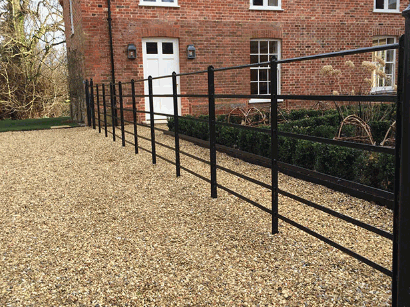
What Is Estate Fencing?
Estate fencing refers to the installation of durable and aesthetically pleasing fencing structures around parklands, estates, and properties.
This type of fencing serves a dual purpose, not just acting as a boundary but also enhancing the overall visual appeal of the property. The ironwork fencing used in estate fencing often adds a touch of elegance and charm to the landscape. These fences provide a sense of security and privacy to large properties, keeping unwanted visitors out while maintaining an open and inviting atmosphere for residents and guests.
Explore in-depth: How Much Does It Cost To Install A Fence
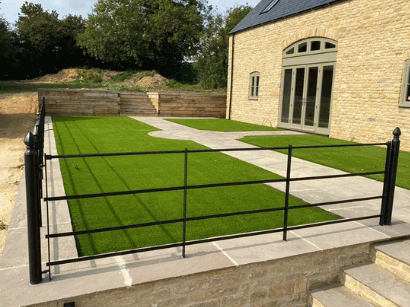
What Are The Benefits Of Installing Estate Fencing?
Installing estate fencing offers numerous benefits, including enhanced aesthetics, exceptional durability, heightened security, and increased versatility in design options.
Estate fencing not only serves as a striking visual boundary, elevating the overall charm of the property but also provides a robust physical barrier that withstands the test of time and weather conditions. The intricate ironwork fencing designs add a touch of elegance and sophistication, enhancing the property’s curb appeal.
The incorporation of advanced security features ensures peace of mind for homeowners, acting as a deterrent to intruders and enhancing the overall safety of the premises. Estate fencing offers a wide range of customization options, allowing individuals to tailor the design to match the aesthetic and functional requirements of their property.
Aesthetics
Aesthetics play a crucial role in estate fencing as it not only defines the property boundaries but also adds a touch of elegance and grandeur to the landscape.
Ironwork fencing, with its intricate details and sturdy construction, often serves as a focal point in the overall design scheme. The beauty of estate fencing lies in its ability to seamlessly blend both functionality and style, creating a harmonious visual impact that complements the surrounding environment.
For those seeking a more personalized touch, bespoke designs offer a range of customization options, allowing homeowners to tailor the fencing to their specific preferences and architectural styles. Whether opting for a classic Victorian-inspired design or a modern minimalist approach, the versatility of estate fencing ensures that it can enhance any property with its timeless appeal.
Durability
Durability is a key feature of estate fencing, ensuring long-lasting protection and structural integrity against external factors such as weather and wear.
Ironwork fencing is commonly used in estate fencing due to its strength and resistance to corrosion, making it a popular choice for robust construction. The meticulous construction techniques, such as precise welding and sturdy anchoring, further enhance the durability of estate fencing.
Plus the materials construction methods and regular maintenance practices play a crucial role in ensuring the longevity of the fencing. This includes inspecting for rust spots, repainting when necessary, and tightening any loose components to uphold the fence’s strength and appearance over time.
The combination of high-quality materials, strategic construction techniques, and diligent maintenance routines all contribute to the exceptional durability of estate fencing, making it a reliable choice for long-term property protection.
Security
Security is paramount in estate fencing, offering a reliable barrier that deters intruders and enhances the safety and privacy of the property.
The height of ironwork fencing plays a crucial role in preventing unauthorized access, acting as a visual deterrent for potential intruders. The inherent strength of the materials used in estate fencing, such as iron, provides durability and resistance against attempts to breach the perimeter.
The option to customize estate fencing allows property owners to tailor the design to their specific security needs, adding features like spikes or decorative elements that further enhance the level of intrusion prevention.
Versatility
Versatility is a hallmark of estate fencing, providing flexibility in design, height, and construction methods to match the specific requirements and aesthetic preferences of the property owner.
Estate fencing, with its ironwork fencing options, can seamlessly blend into various landscapes, whether it be a sprawling country estate or a quaint suburban garden. Customized solutions are key in ensuring that the fencing not only complements the architectural style of the property but also serves its functional needs, be it for security, boundary demarcation, or simply enhancing the overall appeal.
From ornate designs reminiscent of classic manor boundaries to sleek and modern interpretations that suit contemporary residences, there is a wide range of possibilities when it comes to choosing estate fencing that caters to diverse tastes and requirements.
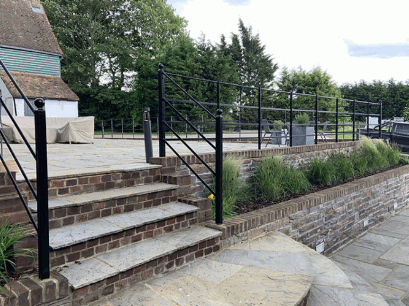
What Materials Are Needed For Installing Estate Fencing?
The essential materials required for installing estate fencing include robust steel posts, sturdy rails, durable brackets, and quality nails for secure assembly.
Robust steel posts serve as the foundation of the installation, providing structural support and ensuring the fence’s stability and longevity.
Sturdy rails run horizontally between the posts, forming the framework of the fence and enhancing its overall strength.
Durable brackets are essential for securely attaching the rails to the posts, creating a cohesive and durable fencing system.
Quality nails play a crucial role in the assembly process, holding the components together firmly to prevent any weak points that could compromise the fence’s integrity.
Steel Posts
Steel posts are fundamental components of estate fencing, providing the structural support and stability necessary to withstand environmental elements and maintain the fence’s integrity.
When considering ironwork fencing for estates, the choice of steel posts is crucial due to their unmatched strength and durability. These posts serve as the backbone of the fence, ensuring a sturdy foundation that can endure varying weather conditions and last for years to come. The installation process for steel posts involves securing them deeply into the ground to create a reliable base for the entire fencing structure. This meticulous approach guarantees that the fence remains secure and upright over time, adding both functionality and aesthetic appeal to the estate.
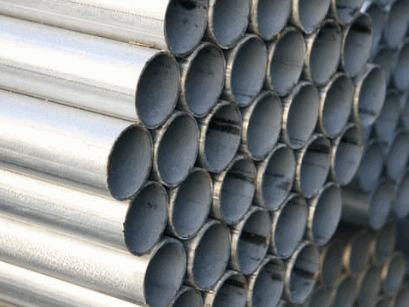
Rails
Rails serve as the horizontal elements of estate fencing, connecting the steel posts and forming the framework that supports the overall structure of the fence.
The role of rails in estate fencing goes beyond merely connecting the posts; they provide crucial stability to the fence, ensuring it can withstand external forces and maintain its integrity over time. Rails contribute significantly to the aesthetic cohesion of the fencing by creating uniformity and a polished look. These horizontal elements act as structural reinforcement, distributing the weight and pressure across the fence, which is vital for its durability.
Brackets
Brackets are essential accessories in estate fencing, facilitating the secure attachment of rails to the steel posts and ensuring a robust and stable fencing system.
These small yet crucial components play a vital role in the overall structural integrity of ironwork fencing systems. By firmly holding the rails in place, brackets prevent any unwanted movement, ensuring that the fence remains secure and upright. Bracket fastening contributes significantly to the longevity of the fence by distributing the weight evenly and reducing stress on individual components.
Without the proper installation of brackets, the fence may be vulnerable to sagging, warping, or even collapsing under pressure. Therefore, the selection and placement of brackets are key factors in maintaining the durability and functionality of an estate fence.
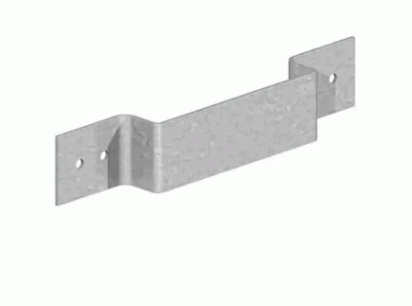
Nails Or Screws
Nails or screws are crucial fasteners in estate fencing, securely joining the various components together to create a cohesive and resilient fencing structure.
Without the secure fixation provided by nails or screws, the integrity of the entire ironwork fencing can be compromised.
These small yet mighty components play a significant role in ensuring that the fence panels, posts, and rails are held firmly in place, safeguarding against strong winds and external pressures.
Their proper installation not only enhances the aesthetic appeal of the estate fencing but also contributes to its long-term durability.
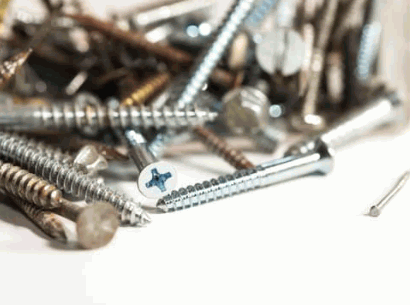
What Tools Are Required For Installing Estate Fencing?
To install estate fencing efficiently, essential tools such as a hammer, post hole digger, level, and tape measure are essential for accurate and secure construction.
Each of these tools plays a crucial role in ensuring that the fencing installation is not only precise but also long-lasting. The hammer is used to drive in the fence posts firmly into the ground, providing stability and support. The post-hole digger aids in creating the necessary holes for the posts, maintaining uniformity in-depth and positioning. The level ensures that the fencing is straight and even, while the tape measure helps in measuring distances accurately for consistent spacing between posts.
Post Hole Digger
The post-hole digger is a vital tool for estate fencing, enabling efficient and precise digging of holes to accommodate the steel posts securely.
When setting up a sturdy fence, the functionality of a post-hole digger goes beyond mere convenience. By creating holes of optimal depth and width, the post-hole digger plays a crucial role in ensuring the structural stability of the entire fencing system. Properly sized holes allow the steel posts to be inserted firmly into the ground, preventing sagging or leaning over time. This process is essential for the longevity and reliability of the fence, making the fencing equipment an essential asset for any installation project. The ground preparation achieved through the use of a post-hole digger guarantees a solid foundation, reducing the risk of post-displacement due to environmental factors such as soil erosion or heavy winds.
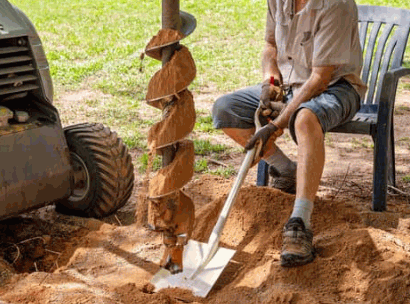
Hammer
A hammer is a versatile tool in estate fencing, used for driving nails, adjusting components, and ensuring a tight and secure fit during the construction process.
One of the key functions of a hammer in estate fencing is its capability to assemble fencing elements efficiently. Whether connecting rails, posts, or panels, the hammer plays a crucial role in securely fastening these components in place. The hammer is instrumental in aligning fencing elements to maintain a straight and aesthetically pleasing fence. Its utility extends beyond fastening, as it assists in making fine adjustments to ensure precise measurements and proper installation of various fencing equipment. The hammer’s versatility allows for quick and effective completion of estate fencing projects.

Level
A level is an essential tool for estate fencing that ensures the straightness and alignment of the fencing components, contributing to the overall structural integrity and visual appeal of the fence.
When installing estate fencing, using a level is crucial to achieve a precise and professional finish. Proper alignment not only enhances the aesthetic aspect but also plays a significant role in the fence’s functionality and durability. By utilizing fencing equipment such as post drivers and tensioners in conjunction with a level, the installation process becomes smoother and more efficient.
Without maintaining accurate alignment during the setup, the fence may appear uneven and structurally weak. Applying alignment tools alongside the level ensures that each post and rail is positioned correctly, guaranteeing a uniform and sturdy construction in the end.
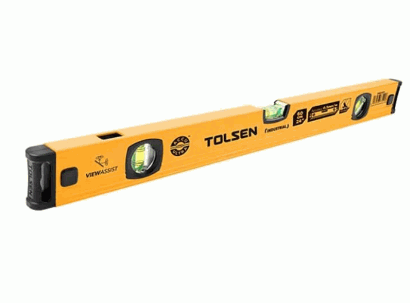
Tape Measure
A tape measure is a critical tool for precise measurements in estate fencing, ensuring accuracy and consistency in the placement of posts, rails, and other components.
When working on estate fencing projects, the tape measure serves as a reliable companion for fencing equipment, enabling proper alignment and spacing between different elements. Its role goes beyond mere measurement; it facilitates layout planning, ensuring that the fencing adheres to the design specifications down to the smallest detail. Whether it’s measuring distances between posts or determining the exact length of rails needed, this versatile tool plays a crucial role in achieving a polished and professional finish in estate fencing projects.
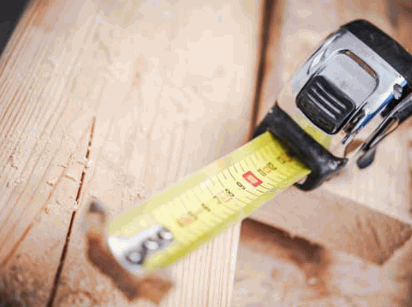
How To Prepare The Area For Installation?
Preparing the area for estate fencing installation involves marking the fence line, clearing the designated space, and digging precise post holes to ensure a stable and uniform foundation.
Ground preparation is a critical first step, as it sets the stage for the entire fencing project. Properly marking the boundaries not only ensures the fence is accurately positioned but also helps in obtaining any necessary permits. Thorough clearance of debris, rocks, and vegetation is essential to prevent any obstructions during the installation process.
Proper hole-digging techniques are crucial to achieving consistent post depth and alignment, which are key factors in the stability and overall aesthetics of the fence. Using tools like a post-hole digger or auger can help achieve the desired depth and ensure the posts are securely anchored.
Marking The Fence Line
Marking the fence line is a critical initial step in estate fencing, ensuring the accurate placement and alignment of the fencing structure according to the property boundaries and design specifications.
One of the primary tools used in the process of boundary marking is the trusty measuring tape to establish precise distances. Creating uniform spacing is essential to achieve a consistent look along the entire fence line, enhancing the overall aesthetics of the estate. Alignment guidelines play a crucial role in this stage to ensure that the fence follows a straight path as intended, avoiding any deviations that may disrupt the visual harmony of the property. The meticulous marking process sets the foundation for a well-structured and visually appealing estate fencing layout.
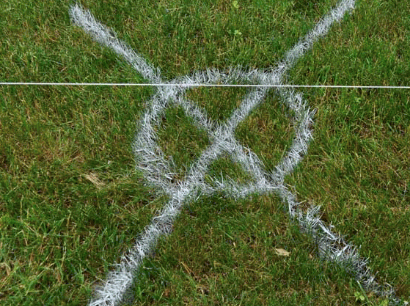
Clearing The Area
Clearing the designated area for estate fencing involves removing obstacles, debris, and vegetation to create a clean and accessible space for installation, ensuring a smooth and efficient construction process.
One crucial aspect to consider during this stage is ground clearance. By ensuring that the ground is free from any obstructions, you not only facilitate the installation process but also lay the foundation for solid and lasting estate fencing.
Prioritizing safety considerations cannot be overstated here. Clearing the area reduces the risk of accidents and injuries during installation and later maintenance.
From an environmental standpoint, proper debris removal is vital. Disposing of debris responsibly protects the surrounding ecosystem and maintains the aesthetic appeal of the property.
Digging Post Holes
Digging post holes is a crucial stage in estate fencing installation, requiring precision, depth, and spacing to accommodate the steel posts securely and ensure the structural stability of the fence.
When undertaking this task, appropriate equipment such as a post-hole digger or an auger is typically utilized to streamline the ground excavation process. The depth of the holes is a key consideration, usually ranging from 18 to 24 inches deep, depending on the fence’s height and the soil condition. Adequate spacing between the holes is fundamental for proper support, typically spaced at intervals of 6 to 8 feet. Thorough preparation of the holes for post-installation helps prevent shifting or leaning of the fence over time, ensuring a lasting and robust fencing system.
How To Install Estate Fencing?
The installation of estate fencing involves setting the posts securely, attaching the rails to form the frame, and securing the fencing panels to create a cohesive and durable perimeter.
Before starting the installation process, it is crucial to carefully measure and mark the exact positions for the posts to ensure proper alignment and structural integrity. Dig holes for the posts, ensuring they are deep enough to provide stability and support. Once the posts are set, carefully attach the rails at the desired heights, making sure they are evenly spaced for a uniform look.
Regarding fencing assembly, follow the manufacturer’s instructions for panel attachment to the rails. Ensure that each panel is securely fastened to the frame to prevent any gaps or weak spots that could compromise the fence’s strength.
Setting The Posts
Setting the posts is a critical phase in estate fencing installation, involving proper alignment, leveling, and anchoring to establish a strong foundation for the fence structure.
During post-installation, attention to detail is crucial to ensure that posts are placed at consistent intervals and angles, ensuring a uniform appearance for the fence. Structural support, including bracing techniques and reinforcement of corner posts, plays a vital role in enhancing the stability and durability of the entire fencing system.
Incorporating proper bracing not only prevents leaning or warping over time but also helps in distributing the weight and forces exerted on the fence, thereby minimizing the risk of structural damage.
By following these meticulous steps in post-setting and reinforcement, one can create a sturdy and reliable estate fence that will endure for years to come.
Attaching The Rails
Attaching the rails is a crucial step in estate fencing construction, requiring precision, spacing, and secure fastening to create a sturdy framework that supports the overall fence structure.
Ensuring proper alignment of the rails is essential to achieve a professional finish. Rail assembly should be meticulously carried out to maintain the structural integrity of the fence. Each rail must be spaced at consistent intervals to guarantee uniformity and enhance the aesthetic appeal of the fencing. Utilizing appropriate connection methods, such as welding or bolting, is vital to secure the rails firmly in place and prevent any potential weak points along the frame. A well-executed rail attachment process ultimately contributes to the durability and longevity of the estate fencing.
Securing The Fencing Panels
Securing the fencing panels is the final step in estate fencing installation, involving proper alignment, fastening, and finishing touches to complete the perimeter and ensure its stability and visual appeal.
Once the panels are positioned correctly, the next crucial step is to secure them in place to protect the enclosed area. This is typically achieved through attachment methods such as welding, bolting, or screwing the panels to the designated posts.
Before finalizing the attachment, thorough alignment checks are conducted to ensure that each panel is level and correctly positioned to maintain the integrity of the fence line.
Quality control measures such as inspecting welds, tightening bolts, and painting or sealing exposed metal components contribute to the longevity and overall aesthetics of the fencing system.
What Is The Maintenance Required For Estate Fencing?
Maintaining estate fencing involves regular cleaning, inspection for loose or damaged parts, and occasional repainting or rust treatment to preserve its aesthetic appeal and structural integrity.
Regarding cleaning ironwork fencing, a gentle wash with soapy water and a soft brush can effectively remove dirt and grime without causing damage to the metal surface. Additionally, regular inspections are crucial to detect any early signs of wear and tear, such as loose screws or rust spots, which can be promptly addressed to prevent further deterioration. Investing in quality rust-resistant paint and performing touch-ups as needed can significantly extend the lifespan of the fencing and maintain its elegant appearance.
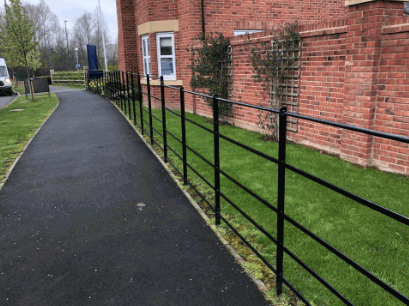
Regular Cleaning
Regular cleaning is essential for estate fencing to remove dirt, debris, and environmental buildup that can compromise the appearance and durability of the structure.
One of the key aspects of maintaining ironwork fencing is preserving its surface integrity through consistent cleaning practices. By regularly removing accumulated grime and residues, you can prevent corrosion and rust formation, which are common enemies of metal fencing. Implementing a gentle cleaning solution and a soft brush to scrub the surface can help maintain the fence’s aesthetic appeal and structural strength.
Experts recommend cleaning your estate fence at least twice a year, ideally in spring and fall, to keep it in top condition throughout the seasons. This routine care not only enhances the visual appeal of your property but also contributes to the longevity of the fence, ensuring it remains a reliable barrier for years to come.
Checking For Loose Or Damaged Parts
Regular inspection for loose or damaged parts is crucial for estate fencing maintenance to identify and address potential weak points, ensuring the structural stability and security of the fence.
During the inspection process, it is important to pay attention to common issues such as rust or corrosion on ironwork fencing, loose screws or bolts, and bent or broken sections. These issues can compromise the structural integrity of the fence, leading to safety hazards and reduced effectiveness.
For loose screws or bolts, a simple tightening or replacement may be sufficient. In cases of rust, sanding and repainting can help prevent further deterioration. For more severe damage, sections may need to be replaced or reinforced.
Repainting Or Rust Treatment
Repainting or rust treatment is necessary for estate fencing to maintain its protective coating, prevent corrosion, and enhance the visual appeal of the structure over time.
Ironwork fencing, such as estate fencing, adds an elegant touch to any property, but it requires proper maintenance to ensure longevity. Applying suitable protective finishes like epoxy coatings or anti-corrosion paints can significantly extend the lifespan of the fence by forming a barrier against rust and environmental damage. Restoration techniques, such as sandblasting or wire brushing, are effective in preparing the surface for repainting, ensuring a smooth and durable finish. Regular maintenance not only preserves the aesthetics of the fence but also contributes to its structural integrity.

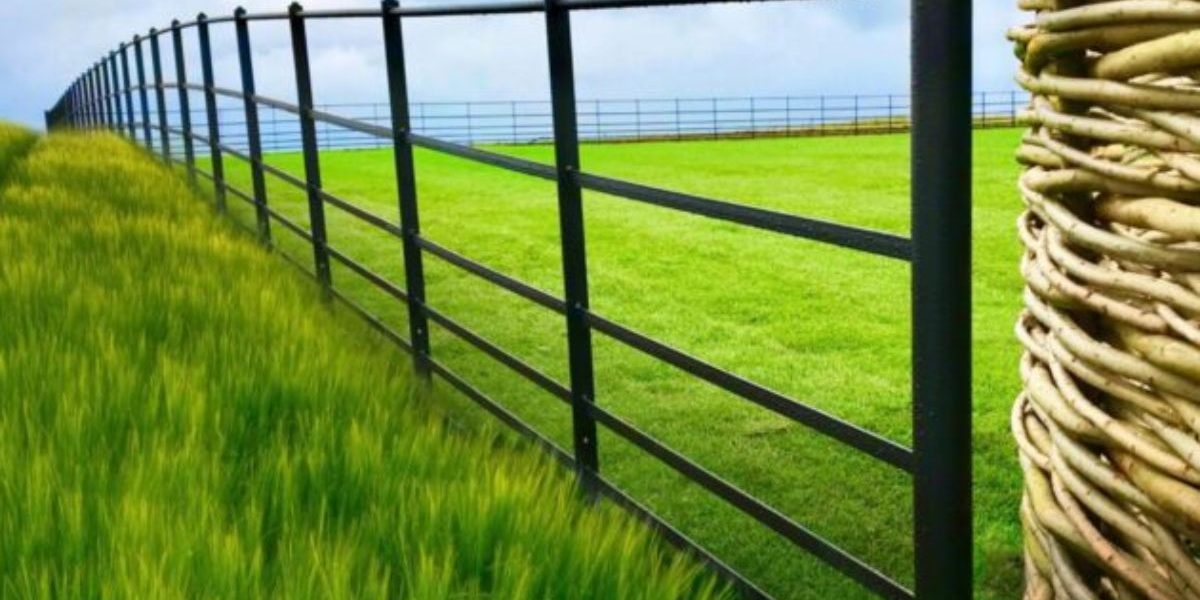
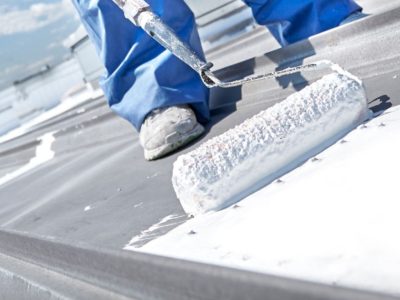

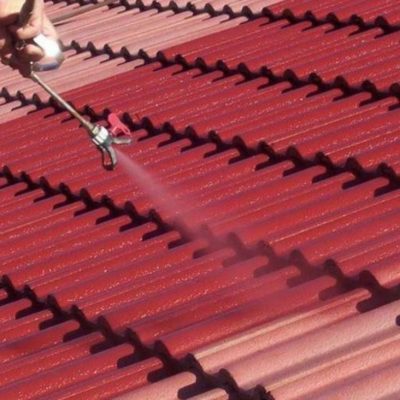

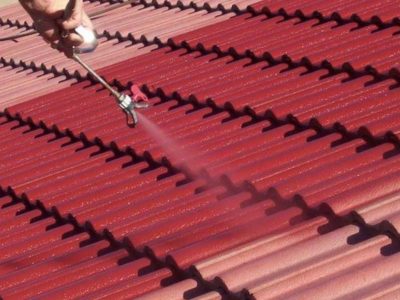

Comments